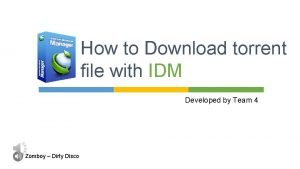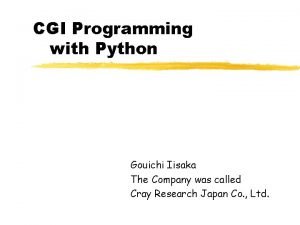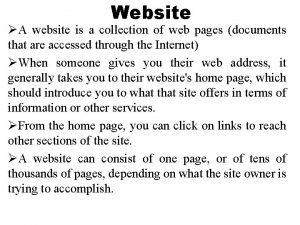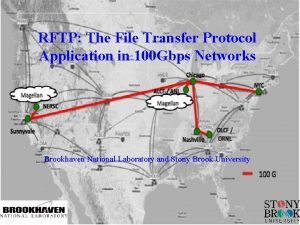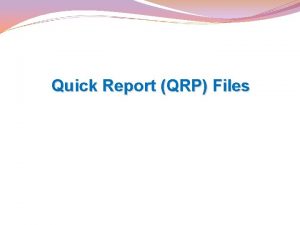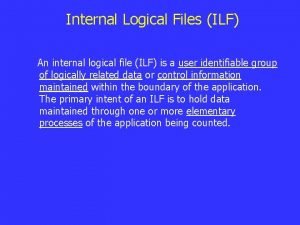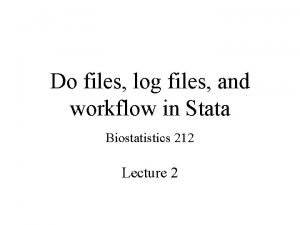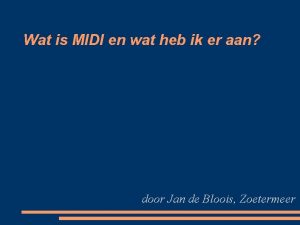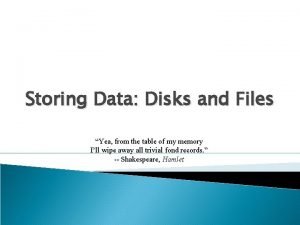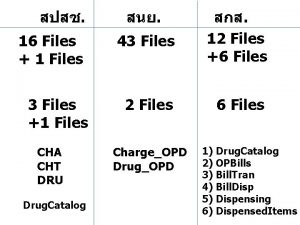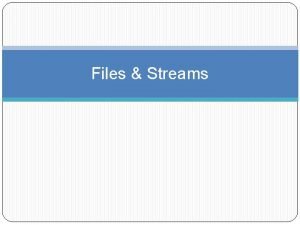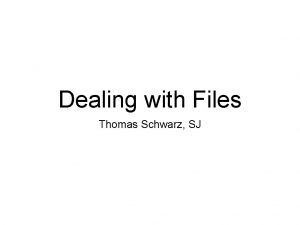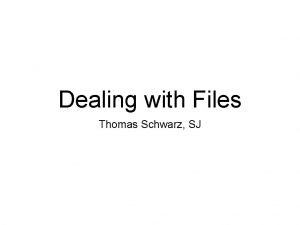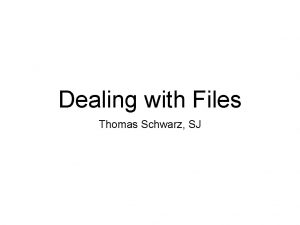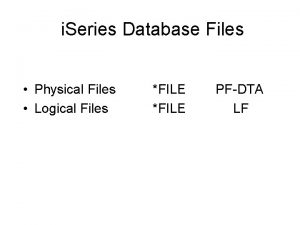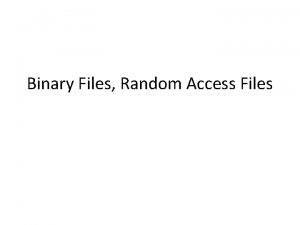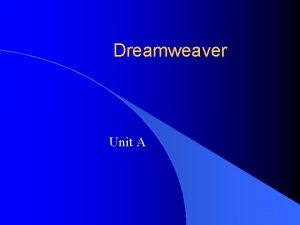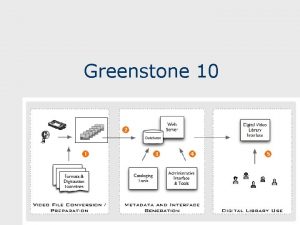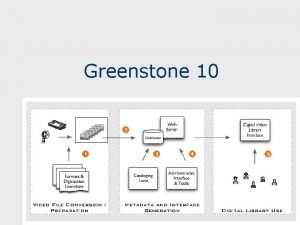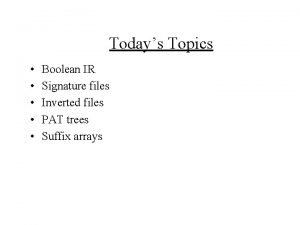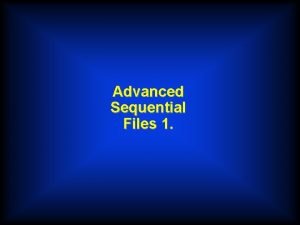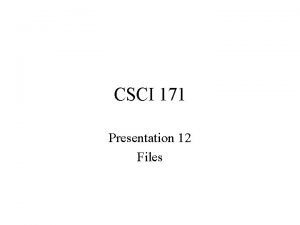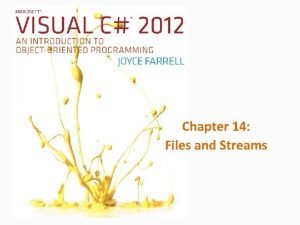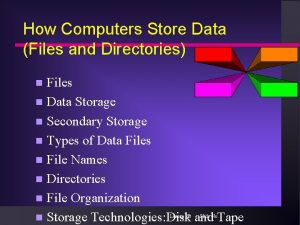Simetar Download Download three files at http ge




























- Slides: 28

Simetar Download • Download three files at: – http: //ge. tt/3 w 2 lhlr • Before installing Simetar do the following: – Download and install the latest Service Pack for Office 2003 or 2007 if using these systems – We do not run on Excel 2010 yet, install 2007 – If you have a Mac you must have Office and use Parallels to allow you to run Excel • Double click the Simetar. MSI file and use the license code provided in class to install Simetar on your computer

Multiple Regression Forecasts • Materials for this lecture • Demo Lecture 2 Multiple Regression. XLS • Read Chapter 15 Pages 8 -9 • Read all of Chapter 16’s Section 13

Define Data Patterns • A time series is a chronological sequence of observations for a particular variable over fixed intervals of time – – – Daily Weekly Monthly Quarterly Annual • Six patterns for time series data (data we work with is time series data because data generated over time). – – – Trend Cycle Seasonal variability Structural variability Irregular variability Black Swans

Patterns in Data Series

Trend Variation • Trend a general up or down movement in the values of a time series over the historical period of observation • Most economic data contains at least one trend – Increasing, decreasing or flat trends • Trend represents long-term growth or decay • Trends caused by strong underlying forces, such as: – – – Technological changes Change in tastes and preferences Change in income and population Market competition Inflation and deflation Policy changes

Cyclical Variation • Cycle is a recurring up and down movement around a trend • Cycles persist for 2 to 20 years from peak to peak – Business cycle is most notorious – Agriculture examples are cattle and hog cycles • Two components to a cycle – Expansion – Contraction • Cycles caused by – – Changes in tastes and preferences Economic activity (inflation and deflation) Production cycles (animals) Moon and sunspots? • Cycles vary in length and magnitude

Seasonal Variation • Periodic (cyclical) patterns in a time series that complete the cycle within a year • Caused by – Weather, seasons of the year – Production/marketing patterns – Customs and holidays • Agricultural production causes seasonal variation of prices • Holidays cause retail demand sales to vary on a seasonal pattern – – – Thanksgiving – turkey St. Patrick’s Day – corned beef and green beer Easter – ham Winter – cheese Summer – ice cream and gasoline sales Holidays and high temperatures – crushed ice

Structural Variation • Variables you want to forecast are often dependent on other variables Qt. Demand = f( Own Price, Competing Price, Income, Population, Season, Tastes & Preferences, Trend, etc. ) Y = a + b (Time) • Structural models will explain most structural variation in a data series – Even when we build structural models, the forecast is not perfect – A residual remains as the unexplained portion

Irregular Variation • Erratic movements in time series that follow no recognizable regular pattern – Random, white noise, or stochastic movements • Risk is this non-systematic variability in the residuals • This risk leads to Monte Carlo simulation of the risk for our probabilistic forecasts – We recognize risks cannot be forecasted – Incorporate risks into probabilistic forecasts – Provide forecasts with confidence intervals

Black Swans (BSs) • BSs low probability events – An outlier “outside realm of reasonable expectations” – Carries an extreme impact – Human nature causes us to concoct explanations • Black swans are an example of uncertainty – Uncertainty is generated by unknown probability distributions – Risk is generated by known distributions • Recent recession was a BSs – A depression is a BSs – Dramatic increases of grain prices in 2006 and 2007 – Dramtaic increase in cotton price in 2010

Multiple Regression Forecasts • Structural model of the forecast variable is used when suggested by: – – Economic theory Knowledge of the industry Relationship to other variables Economic model is being developed • Examples of forecasting: – – – Planted acres – inputs sales businesses need this Demand for a product – sales and production Price of corn or cattle – feedlots, grain mills, etc. Govt. payments – Congressional Budget Office Exports or trade flows – international ag. business

Multiple Regression Forecasts • Structural model Ŷ = a + b 1 X 1 + b 2 X 2 + b 3 X 3 + b 4 X 4 + e Where Xi’s are exogenous variables that explain the variation of Y over the historical period • Estimate parameters (a, bi’s, and SEPe) using multiple regression (or OLS) – OLS is preferred because it minimizes the sum of squared residuals – This is the same as reducing the risk on Ŷ as much as possible, i. e. , minimizing the risk for your forecast

Multiple Regression Model

Steps to Build Multiple Regression Models • Plot the Y variable in search of: trend, seasonal, cyclical and irregular variation • Plot Y vs. each X to see the structural relationship and how X may explain Y; calculate correlation coefficients to Y • Hypothesize the model equation(s) with all likely Xs to explain the Y, based on knowledge of model & theory • Forecasting wheat production, model is Plt Act = f(E(Pricet), Plt Act-1, E(Pth. Cropt), Trend, Yieldt-1) Harvested Act = a + b Plt Act Yieldt = a + b Tt Prodt = Harvested Act * Yieldt • Estimate and re-estimate the model • Make the deterministic forecast • Make the forecast stochastic for a probabilistic forecast

US Planted Wheat Acreage Model Plt Act = f(E(Pricet), Yieldt-1, CRPt, Yearst) • Statistically significant betas for Trend (years variable) and Price • Leave CRP in model because of policy analysis and it has the correct sign • Use Trend (years) over Yieldt-1, Trend masks the effects of Yield

Multiple Regression Forecasts • Specify alternative values for X and forecast the Deterministic Component • Multiply Betas by their respective X’s – Forecast Acres for alternative Prices and CRP – Lagged Yield and Year are constant in scenarios

Multiple Regression Forecasts • Probabilistic forecast uses ŶT+I and SEP or Std Dev and assume a normal distrib. for residuals ỸT+i = ŶT+i + NORM(0, SEPT) or ỸT+i = NORM(ŶT+i , SEPT)

Multiple Regression Forecasts • Present probabilistic forecast as a PDF with 95% Confidence Interval shown here as the bars about the mean in a probability density function (PDF)

Growth Forecasts • Some data display a growth pattern • Easy to forecast with multiple regression • Add T 2 variable to capture the growth or decay of Y variable • Growth function Ŷ = a + b 1 T+ b 2 T 2 Log(Ŷ) = a + b 1 Log(T) Double Log(Ŷ) = a + b 1 T Single Log See Decay Function worksheet for several examples for handling this problem

Multiple Regression Forecasts Single Log Form Log (Yt) = b 0 + b 1 T Double Log Form Log (Yt) = b 0 + b 1 Log (T)

Decay Function Forecasts • Some data display a decay pattern • Forecast them with multiple regression • Add an X variable to capture the growth or decay of forecast variable • Decay function Ŷ = a + b 1(1/T) + b 2(1/T 2)

Forecasting Growth or Decay Patterns • Here is the regression result for estimating a decay function Ŷt = a + b 1 (1/Tt) or Ŷt = a + b 1 (1/Tt) + b 2 (1/Tt 2)

Multiple Regression Forecasts • Examine a structural regression model that contains Trend an X variable Ŷ = a + b 1 T + b 2 Xt does not explain all of the variability, a seasonal or cyclical variability may be present, if so need to remove its effect

Goodness of Fit Measures • Models with high R 2 may not forecast well – If add enough Xs can get high R 2 – R-Bar 2 is preferred as it is not affected by no. Xs • Selecting based on highest R 2 same as using minimum Mean Squared Error MSE =(∑ et 2)/T

Goodness of Fit Measures • R-Bar 2 takes into account the effect of adding Xs where s 2 is the unbiased estimator of the regression residuals and k represents the number of Xs in the model

Goodness of Fit Measures • Akaike Information Criterion (AIC) • Schwarz Information Criterion (SIC) • For T = 100 and k goes from 1 to 25 • The SIC affords the greatest penalty for just adding Xs. • The AIC is second best and the R 2 would be the poorest.

Goodness of Fit Measures • Summary of goodness of fit measures – SIC, AIC, and S 2 are sensitive to both k and T – The S 2 is small and rises slowly as k/T increases – AIC and SIC rise faster as k/T increases – SIC is most sensitive to k/T increases

Goodness of Fit Measures • MSE works best to determine best model for “in sample” forecasting • R 2 does not penalize for adding k’s • R-Bar 2 is based on S 2 so it provides some penalty as k increases • AIC is better then R 2 but SIC results in the most parsimonious models (fewest k’s)
 Dot powai files are binary files
Dot powai files are binary files Cjis policy and security awareness test
Cjis policy and security awareness test Ncic hosts restricted files and non-restricted files
Ncic hosts restricted files and non-restricted files Slidetodoc.com
Slidetodoc.com Http //mbs.meb.gov.tr/ http //www.alantercihleri.com
Http //mbs.meb.gov.tr/ http //www.alantercihleri.com Http //siat.ung.ac.id atau http //pmb.ung.ac.id
Http //siat.ung.ac.id atau http //pmb.ung.ac.id Turtle graphics logo
Turtle graphics logo Http://www.python.org/download/
Http://www.python.org/download/ Http www app2open com download
Http www app2open com download Http://www.ubuntu.com/download/desktop
Http://www.ubuntu.com/download/desktop A website is a collection of webpages
A website is a collection of webpages S2d deduplication
S2d deduplication Tsd export files
Tsd export files Rftp
Rftp What is a qrp file
What is a qrp file Flash to unity converter
Flash to unity converter Makefile with multiple source files
Makefile with multiple source files Internal logical
Internal logical Ibverbs header files not found
Ibverbs header files not found Ged m files
Ged m files Data files in c
Data files in c Save log stata
Save log stata Send bif files
Send bif files Dynamics 365 multiple files storage
Dynamics 365 multiple files storage Features of a good distributed file system
Features of a good distributed file system Draaiorgel midi files
Draaiorgel midi files Driver qualification file retention
Driver qualification file retention Heap files in dbms
Heap files in dbms Salesforce files connect implementation guide
Salesforce files connect implementation guide



